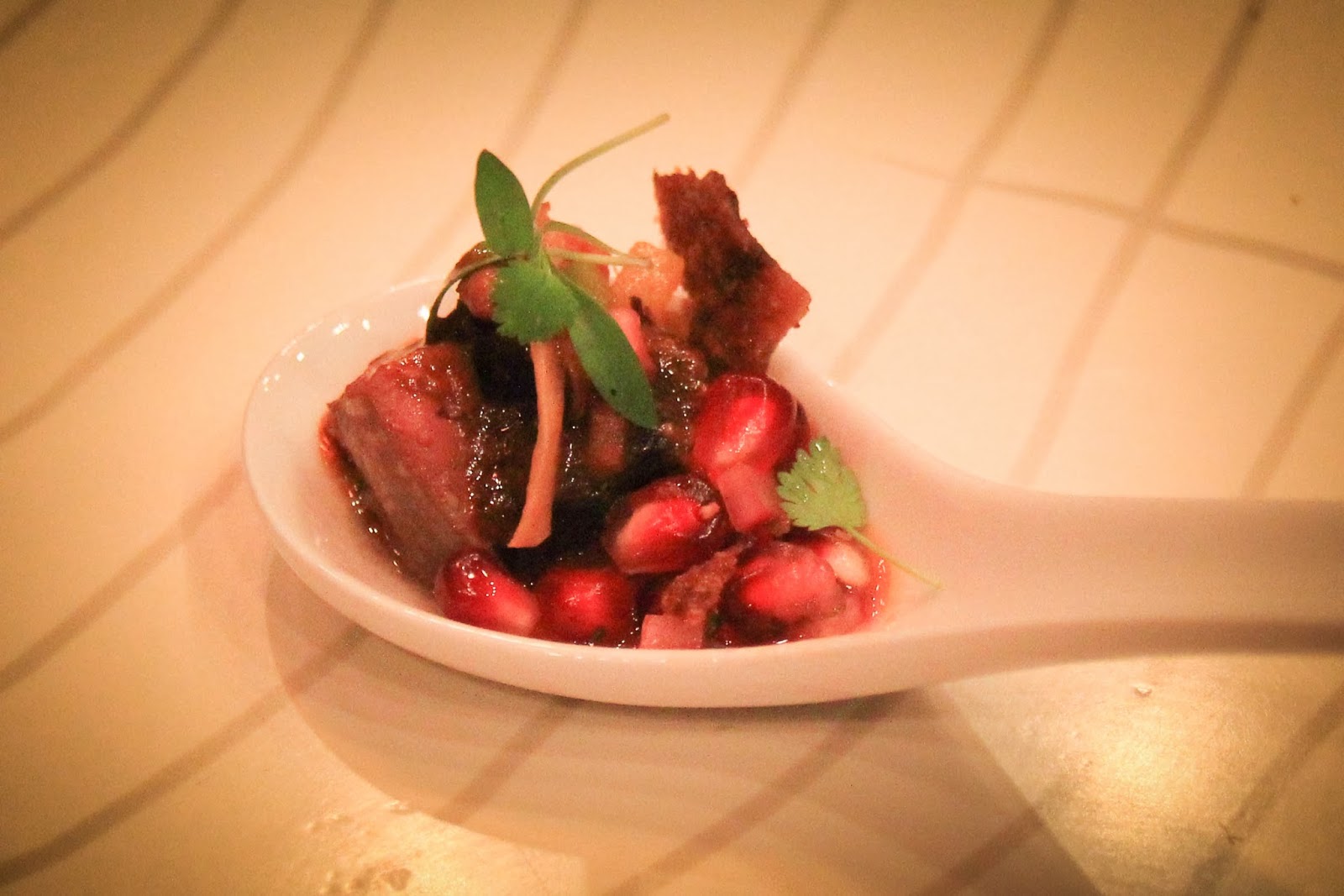 |
| Photo: Garrett Lamm |
By: Ian McGinnity
Capital Cooking Contributor
Decidedly delectable dishes and colorful, calavera-clouding cocktails come alive at Oyamel’s annual Dia de los Muertos festival. A compelling meld of the common with the exquisite, Head Chef Colin King demonstrates his well-honed craft by fashioning traditional Mexican dishes with refined ingredients and delicate garnishes. Lasting until November 2nd, this is an event you will not want to miss.
Capital Cooking Contributor
Decidedly delectable dishes and colorful, calavera-clouding cocktails come alive at Oyamel’s annual Dia de los Muertos festival. A compelling meld of the common with the exquisite, Head Chef Colin King demonstrates his well-honed craft by fashioning traditional Mexican dishes with refined ingredients and delicate garnishes. Lasting until November 2nd, this is an event you will not want to miss.
This year, Oyamel’s special menu celebrates José Guadalupe Posada, a late 19th century artist and illustrator whose work addressed political, religious and social issues in José de la Cruz Porfirio Díaz Mori’s Mexico. In his most iconic work, Posada portrayed the contemporary hoity-toities of his day - politicians, generals, socialites – as comedic, grinning skeletons, their bourgeois bones bouncing on the backs of bicycles, or embroiled in bumbling battles, or buffoonishly bonding over music and mezcal. Since his death in 1913, Posada’s caleveras (or "skull") and skeleton illustrations have become synonymous with celebrating and honoring the dead, a relatively new development in a pre-Columbian tradition which originated between 2,500 – 3000 years ago in the Aztec empire. In essence, Oyamel's Day of the Dead festival is a tribute to both ancient tradition and to Posada's substantial artistic contribution.
 |
| Photo: Garrett Lamm |
Perhaps there is no better way to celebrate spirits since
passed than with spirits in a glass. The special cocktail selection for this
fiesta brings vibrant flavors, diversity of ingredients, and skillfully-executed presentations (read: Almond air) that pack a
memorable punch while beautifully accentuating the event’s overarching themes.
 |
| Photo: Garrett Lamm |
The Cempasuchil comprises of Crème Yvette, (a fine blend of
raspberry, blackberry, strawberry and grapes mixed with dried violet leaves
from the Provence region of France and macerated pneumatically in Bordeaux),
white tequila, mint and lemon, and topped with a evergreen mint leaf and a
shoot of lavender. As the white tequila mixes with the subdued violet of the
Crème Yvette, a vibrant cerise emerges, providing a brilliant background
against which the cool of the mint and lavender calmly rest. The aesthetics of
this drink are so striking, that it’s almost a shame to drink it. Almost.
 |
| Photo: Garrett Lamm |
 |
| Photo: Garrett Lamm |
The Ostiones Pimentos, poached oysters with black caviar,
bay leaf, garlic and ground pepper, and then sprinkled with lemon juice, acted as a
powerfully salty accompaniment to the largely sweet selection of specialty
cocktails. The oysters are served attached to their shells and involve a fair
amount of delicate slurping and finagling (which is rather oxymoronic) to
remove. Once removed, a forceful, oceanic wave of salt from both the oyster
meat and the bubbly roe washes over the palate. This saline blast is somewhat
mellowed by the inclusion of tangy lemon and balanced even further by the
presence of the bay leaf, the faint crunch of which adds a welcomed contrast to
the velvety slickness of the oyster.
|
|
Photo: Garrett Lamm
|
While the Chichilo negro- tender, juicy slices of short rib cooked for a staggering 36 hours and in a Oaxaca mole sauce that contained over 30 different spices – seemed to receive the most hype during the brief but warm welcome by Chef King, it was the Pato frito en chile seco, duck leg in a rich red Chihuatl mole, that outshone all other plates. The duck is crisped to perfection on the outside, but succulent and tender everywhere else. Adding some complexity to the spicy but not overwhelming pop of the chihuatl chiles, chunks of pink pomegranate meat cling to the sides of pomegranate seeds, which stipple playfully around the dish. This already superb combination is topped with kobocha squash, soft mushrooms and fresh pico de gallo.
 |
| Photo: Garrett Lamm |
The menu also includes Caviar de Chapala (black caviar,
shreds of Serrano peppers, cilantro and onions on a perfectly-textured fried
masa mound), Sopa de Calabaza (creamy, hearty foie gras pumpkin soup with micro
marigolds and pumpkin seeds), Jaibas Rellenas (stuffed crab shell topped with
sea urchin butter) and a number of additional cocktails such as the
Las Calacas, Pato borracho (Gran Centenario Anejo tequila infused with duck fat
and dolloped with almond air espuma), and the Resucito (tequila, heavy dose of
lime and grapefruit bitters with a grapefruit peel). Every plate and potable on
the menu is visually stunning and well worth a try; the only problem is
deciding where to start.
 |
| Photo: Garrett Lamm |
 |
| Photo: Garrett Lamm |
Photo: Garrett Lamm
|
 |
| Photo: Garrett Lamm |





No comments:
Post a Comment